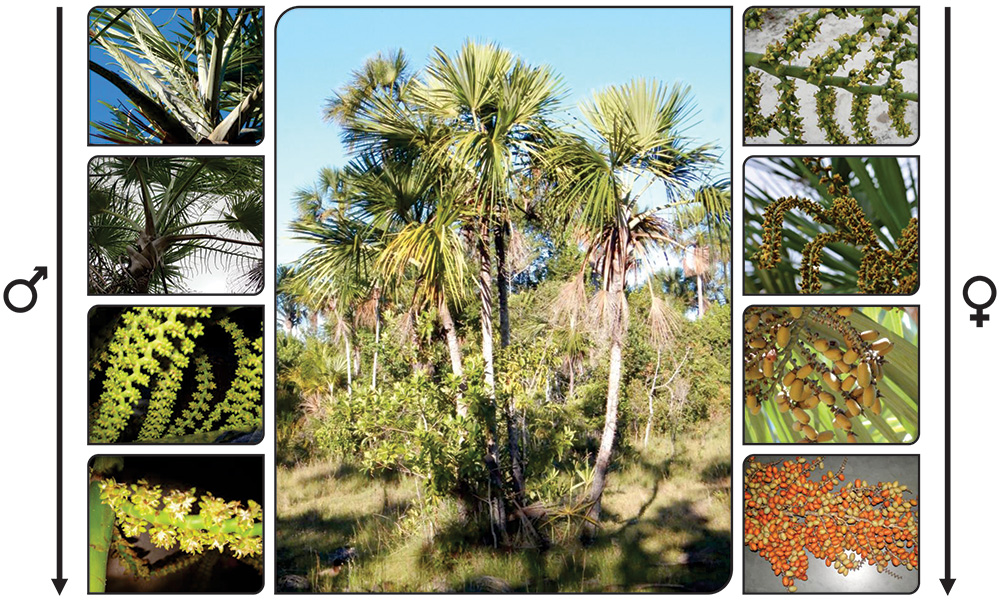ABSTRACT
Our research focused on the reproductive phenology of Mauritiella armata, a key veredas species in southeastern Brazil, and aspects of its floral and fruit morphology and sexual system. We observed the reproductive phenological patterns of M. armata for 36 months, and examined the relationships between phenophases and environmental variables to describe its phenological patterns in relation to environmental filters, as well as its floral and fruit morphologies, sexual system (to evaluate dioecy), and the biometry of its reproductive parts. Flowering was observed in the dry season and at the beginning of the rainy season, with fruiting occurring during the rainy season. The reproductive phenophases responded to environmental seasonality, principally temperature in the period immediately preceding the expression of the phenophase, as well as to environmental variations that had occurred up to six months earlier. The dioecious sexual system of M. armata was confirmed, with flowering synchronization between the sexes. The population studied did not exhibit apomixis, having xenogamy as its reproductive system. The staminate inflorescences were larger than the pistillate inflorescences and had greater numbers of flowers, although the pistillate flowers were larger. Wind pollen dispersal was not observed, thereby indicating that this species requires biotic pollination for fruit production.
Keywords:
reproductive pattern; floral biology; palm tree; Cerrado; vereda; swamp ecosystem.

 Thumbnail
Thumbnail
 Thumbnail
Thumbnail
 Thumbnail
Thumbnail
 Thumbnail
Thumbnail
 Thumbnail
Thumbnail




